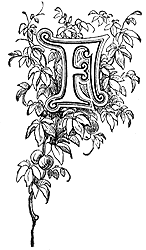 |

OLLOWING the course of the great river towards its source, we come to the "beautiful valley," through which, as Macaulay says, "the Thames, not yet defiled by the precincts of a great capital, nor rising and falling by the flow and ebb of the sea, rolls under woods of beech round the gentle hills of Berkshire." The valley is Hurley, a spot of great beauty Here, in 1600, Richard Lovelace, who fought with Drake in the Spanish Main, and brought home much treasure taken from the Spaniards, erected on the ruins of St. Mary's Priory, a splendid dwelling.
His son was elevated to the peerage as Baron Lovelace of Hurley, and his great-grandson was the celebrated Lord Lovelace of James II.'s reign, noted for his taste, his magnificence, and his audacious Whiggism. He was five or six times arrested for political offenses, the last for which he was tried being his contemptuous denial of the validity of a warrant signed by a Roman Catholic justice of the peace. He was brought before the Privy Council, the king being present, and was strictly examined. But he cleverly avoided criminating himself, and the evidence against him was not sufficient to convict him. James angrily I exclaimed, "My lord, this is not the first trick you have played me!" "Sir," answered Lovelace boldly, "I have never I played any trick on your Majesty or on any other person. Whoever has accused me to your Majesty of playing tricks is a liar."
But we can scarcely allow that Lovelace was as truthful as he boasted, for he was soon afterwards engaged with the planners of the Revolution, and it was in a dark chamber under the splendid saloon of Lady Place that midnight conferences were held during that anxious time when England was impatiently expecting a "Protestant wind" that would bring William of Orange to her shores. Here, in fact, it is said the resolution to call William in was adopted, and the principal papers that brought about the change of government were signed.
When William III. landed at Torbay, Lovelace met him with seventy armed followers, and the new king afterwards visited his zealous adherent at Lady Place.
Lord Lovelace spent great part of his fortune in decorating his house. The grand inlaid staircase was magnificent; the ceilings of the rooms were painted by Verrio, and the panels were of paintings of Salvator Rosa's.
When the Lovelaces' wealth declined, the place was purchased by a lady who had won £20,000 in a lottery. She was a Mrs. Williams, the sister of the Bishop of Rochester.
The Williams' family were succeeded by the brave and unfortunate Admiral Kempenfeldt, who went down in the Royal George at Spithead, "while all the sea was calm."
Admiral Kempenfeldt and his brother planted two thorntrees here. The brother occupied the house while the Admiral was at sea. One day he saw that the thorn planted by the gallant seaman had withered, and with a strange feeling of superstition exclaimed, "I feel sure that this is an omen that my brother is dead." It chanced to be a true presentiment, for that evening came the news of the loss of the Royal George.
The house was entirely destroyed in 1837, and only a green mound remains to mark its site, but Hurley is still a lovely spot.
|
 |